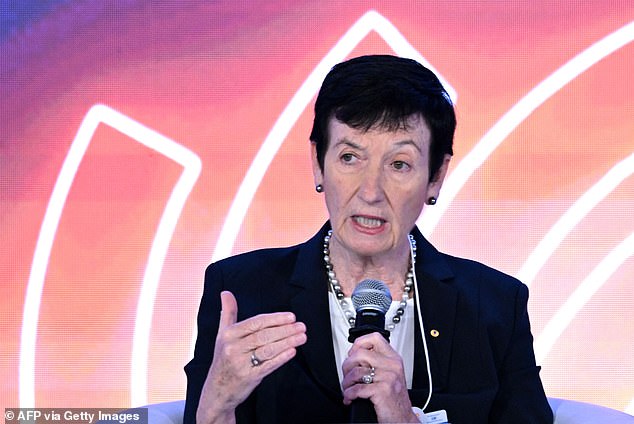Temporary visa holders puts squeeze on housing market in Australia
A flood of temporary visa holders into Australia has put further pressure on the country’s chronic housing shortage.
The number of people entering on student, working holiday and Covid work visas has skyrocketed by a further 730,000 since Anthony Albanese was elected Prime Minister in May 2022.
This means that the total of such visa holders has increased from around 1.8 million to around 2.5 million at the end of the last financial year.
The figure is equivalent to taking in the combined population of the Gold Coast and Tweed Heads area of south-east Queensland and northern NSW.
The majority of the additional visas went to 418,000 students and graduates.
The number of people entering Australia on temporary visas has soared since the end of the Covid pandemic (stock image)

Rental vacancy rates have fallen sharply across the country (pictured is a property inspection queue at Bondi in Sydney)
There were also an additional 108,000 working holidaymakers, while 101,000 benefited from Covid work visa holders before the government abolished that category over fears of cheating.
Meanwhile, Australia’s rental vacancy rate recorded its sharpest decline on record in a year and is 54 per cent below levels at the start of the Covid pandemic, REA’s PropTrack Market Insight Report shows.
In Sydney, the vacancy rate is just 1.6 percent, while the city’s population is growing by an average of two percent every year.
The shortage of housing supply has also caused prices to rise enormously.
The average weekly rent in Sydney rose 24.1 per cent to $666.39 in the year to July, while the equivalent house rent rose 15.9 per cent to $963.92, data from SQM Research showed.
For those fortunate enough to be thinking about buying, the city’s median home price has risen to $1.334 million, based on figures from CoreLogic, which would put the price well out of reach of an average, full-time worker earning $94,000 a year .
In August, the Business Council of Australia (BCA), which represents millionaire CEOs, argued that the influx of people into Australia is only a temporary rebalancing after the Covid period closed its borders.
BCA chief executive Jennifer Westacott said the shortcomings of the 2020 and 2021 Covid closures were still evident.
“Our population is expected to be smaller than previously predicted, regardless of the current migration catch-up period,” she said.
But while the council recognized the lack of housing supply as a ‘real problem’, it said migration was not the crucial problem causing it and that reducing numbers was not the solution.
“The majority of Australians agree that migration is a benefit to Australia,” the report said.
‘The condition is that this must be properly planned and managed, including the provision of sufficient housing supply.’

Business Council of Australian CEO Jennifer Westacott says wave of migration offsets border closures during Covid pandemic
The council highlighted underperforming planning systems and restrictive zoning laws as a handbrake on new supply.
The report also found a decline in the number of people per home as space became desirable during Covid lockdowns, boosting housing demand even as the population shrank.
The BCA welcomed the federal government’s efforts to reform the migration system, noting that slow and complex systems were holding the nation back as companies competed to be the “best and brightest.”
However, in August, AMP chief economist Shane Oliver said immigration-driven population growth was actually making Australians less productive because it was not well supported by public and other investment.
“Very strong population growth with inadequate response to infrastructure and housing supply has led to urban congestion and poor housing affordability, contributing to poor productivity growth,” he said.
He also argued that high population growth meant investors were buying homes for excess profit, to take advantage of a housing shortage, rather than putting their money into new business ventures or stocks.
“Increased speculative activity around housing diverts resources from more productive uses,” he said.
